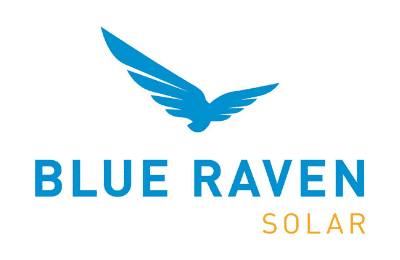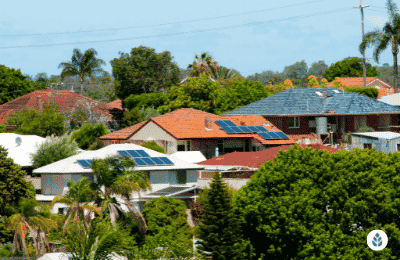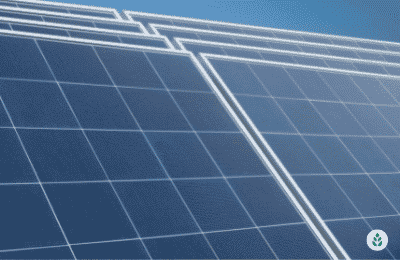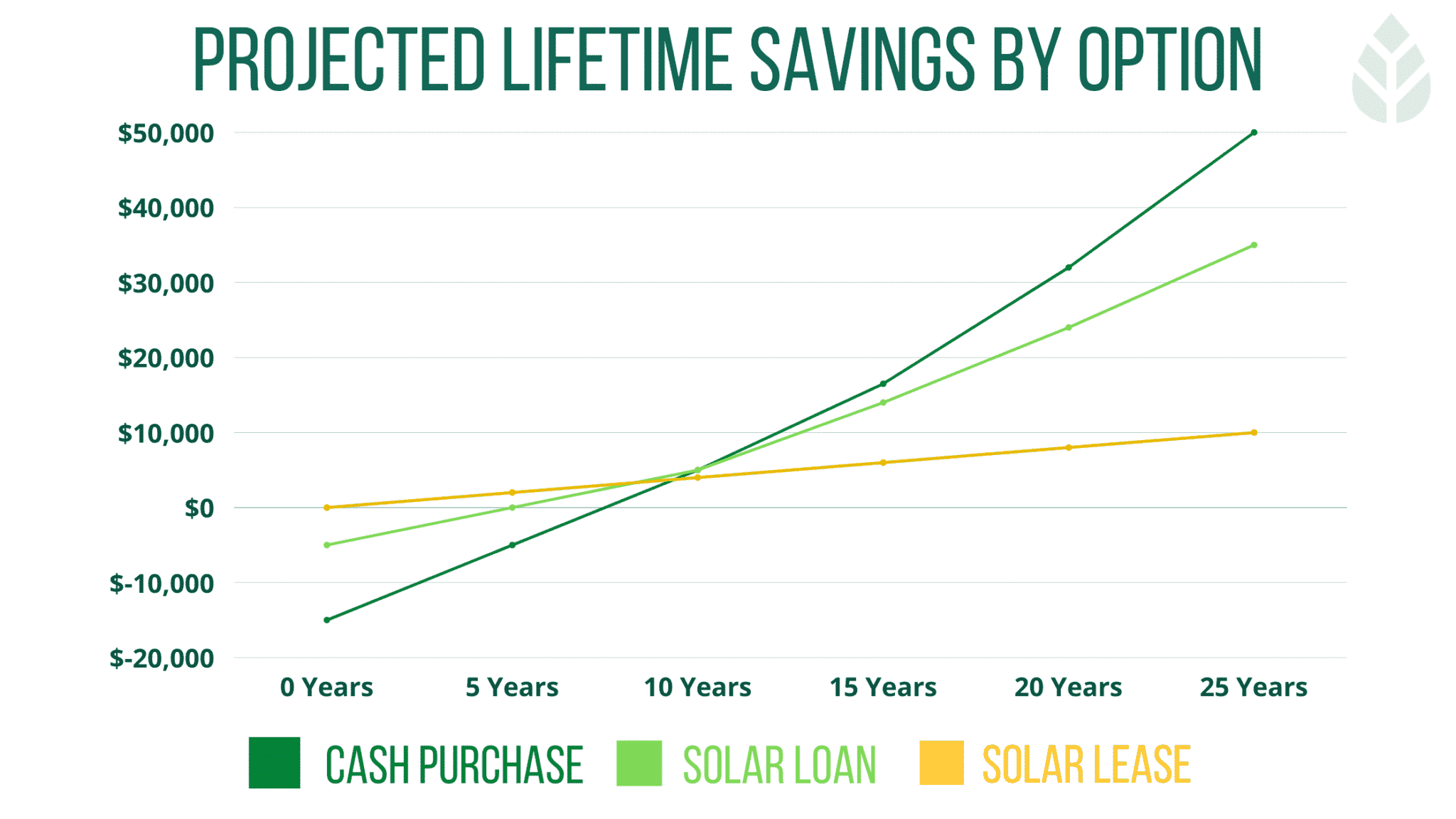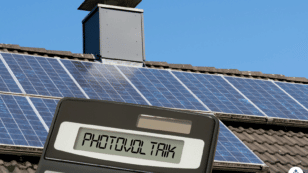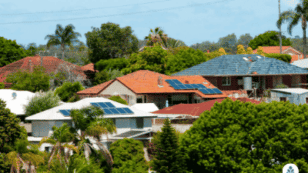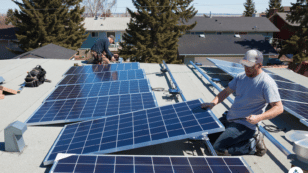
Is Solar Worth It in California? (2024 Homeowner's Guide)
In this guide, you’ll learn:
- How can CA homeowners determine if solar is worth it?
- What are the main benefits of solar panels in California?
- What should CA homeowners look out for when going solar?
Each product and or company featured here has been independently selected by the writer. You can learn more about our review methodology here. If you make a purchase using the links included, we may earn commission.
Is California Good for Solar Energy?
California consistently ranks among the best states in the country for solar-friendliness, and it’s currently the best place in the nation to convert to solar energy.
Without considering battery costs, Californians pay an average of $19,980 before the federal tax credit, or $13,986 after the 30% credit. This is well below the national average of $20,979, and residents also enjoy a number of solar incentives provided by the state and the federal government that increase the value of solar panels overall. Batteries add between $10,000 and $20,000 to your total, in most cases, and can be a crucial part of saving money.
Below, you’ll find information on how to determine if solar panels would benefit you and your home, the benefits you’ll enjoy when you go solar in California and some things to consider leading up to and throughout the conversion process.

Blue Raven Solar
Pros
- Industry-leading in-house financing
- Competitive pricing
- Excellent reputation
Cons
- Doesn't offer solar batteries (coming 2022)

NRG Clean Power
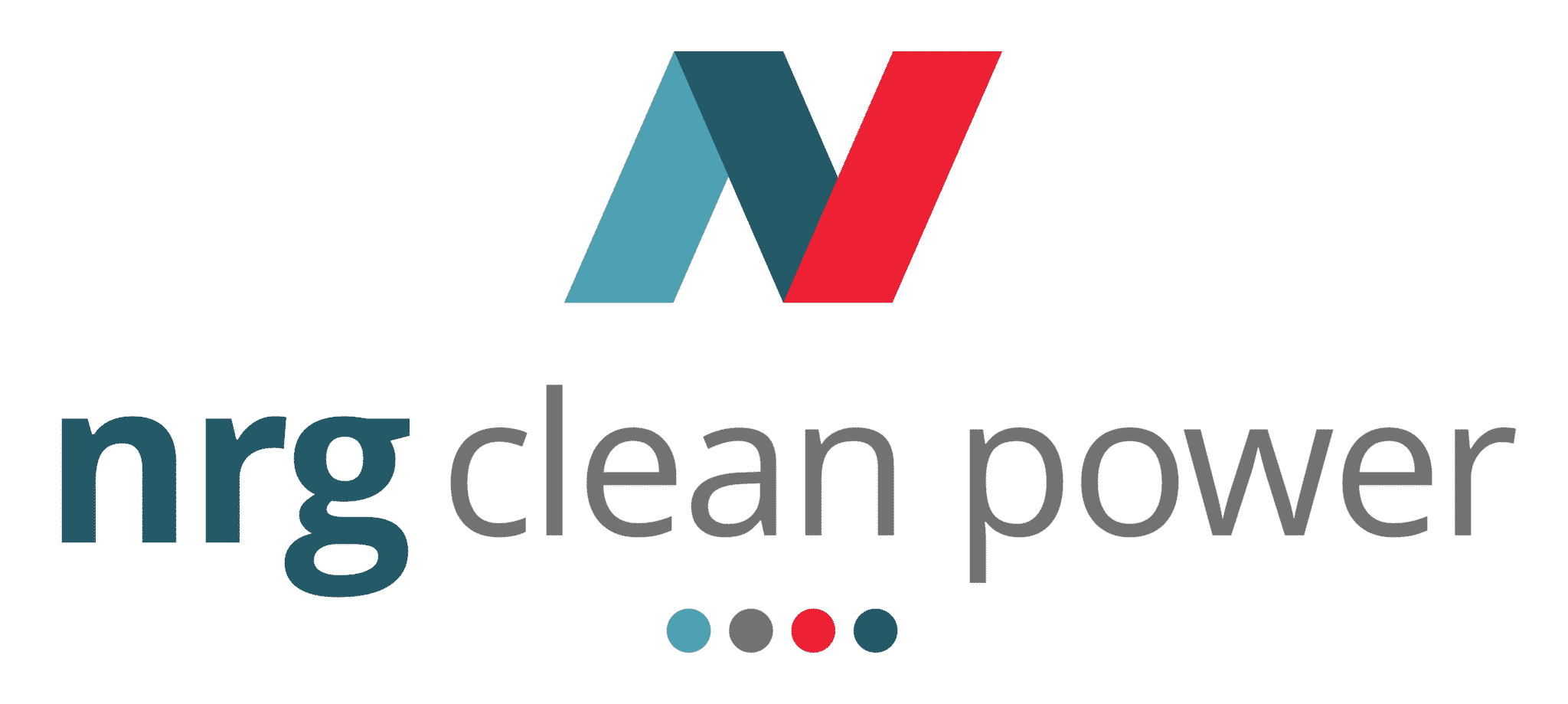
Regional Service
Average cost
Pros
- Industry-leading warranty
- Outstanding customer service
- Representatives are experts on local policies
Cons
- No leases or PPAs
- Can be slightly expensive
Watch Below: California Updated Their Net Metering Policy. What Does That Mean For You?
How Can You Figure Out if Solar Panels Are Worth It In California?
Even though California is the number one state in the country for solar conversions, going solar won’t be right for every homeowner in the area. Determining if solar will benefit you takes some careful calculations, and there are several things that can influence your decision. We’ll discuss the most significant factors below.
- Your home’s electrical consumption
- Solar array size required to satisfy that consumption
- Cost of going solar in your location
- Your average payback period in California
- Whether or not batteries make sense for your situation
- Average buy-back rates in California
- Your roof’s exposure to the sun
- Solar outlook in California
Your Cost of Going Solar in California
The average price of solar panels in California is around $19,980 before the federal tax credit or $13,986 after the credit is taken into consideration. This assumes the typical price of $3.33 per watt, which is right in line with the national average, and the average system size needed to offset electric consumption, which is 6 kW, well below the national average.
Solar panels are more valuable in areas where electricity rates or energy usage is high. Although Californians use far less energy than most residents throughout the country, they pay an average of 29.58 cents per kilowatt-hour, which is significantly more expensive than the average of 16.79 cents in the US.
Given the very high price of power, most Californians will find solar panels well worth the investment. However, as we’ll discuss below, California’s recent changes to its net metering policy more or less demands batteries to offset your consumption, so your total installation cost will be higher than many areas where batteries are not yet necessary.
Your Home’s Electricity Consumption
Most importantly, you’ll want to consider how much electricity your home uses in an average month, as your solar panels will slowly pay for themselves by reducing your electricity expenses. Many electric bills will show total consumption for the year to date. You may have to look at a December bill to see the summary for the year.
Solar panels are generally considered valuable in homes that use more than 500 kilowatt-hours every month. You can determine your average energy usage by looking at your past electric bills. In California, the typical consumption is just 572 kWh.
Homeowners who use much less than the average might find that the return on investment is too low to make going solar a worthwhile endeavor. However, the average energy rate should also be considered. We’ll discuss this in greater depth below, but know that most CA residents will still benefit from solar conversion even if their energy needs are a bit low.
Learn More About Kilowatts & Solar Panels
Using PVWatts to Calculate Your Solar Requirement
The National Renewable Energy Lab (NREL) has a free, easy-to-use calculator into which you can place your address. You’re then able to click on their Roof Size Calculator to assess your roof position automatically using satellite imagery. The calculator estimates the size of the system your roof can accommodate on the southern-facing portions where the panels will see the most direct sunlight.
If the amount calculated based upon roof size is more than you need, then you can simply adjust the kW down in their calculator until the annual kWh produced on their month-to-month summary page equals the annual kWh usage you obtained from your utility bill.
This will enable you to use the average prices for solar quoted below to estimate your potential installation costs more accurately. Keep in mind that latitude has a great deal to do with solar collection potential, which also affects your return on investment. The same size system will produce more kWh on a sunny day in Southern California than it produces in Northern California.
You can also use the following table to get an idea of how much you’ll pay for solar based on how many kilowatts you need to install to offset your consumption.
| System Size | Typical System Cost (Before ITC) | Typical System Cost (After ITC) |
| 3 kW | $9,990 | $6,993 |
| 4 kW | $13,320 | $9,324 |
| 5 kW | $16,650 | $11,655 |
| 6 kW | $19,980 | $13,986 |
| 7 kW | $23,310 | $16,317 |
| 8 kW | $26,640 | $18,648 |
| 9 kW | $29,970 | $20,979 |
Average Solar Payback Period in California
In most cases, solar panels pay for themselves by providing you with energy savings. The time it takes panels to pay themselves off is referred to as the solar panel payback period.
The average payback period in the United States is 11 years, but the high price of electricity and the generally high solar collection potential in most of California allows homeowners to pay off their panels in an average of just 7 years, not including the cost of batteries. Since batteries are usually necessary with California’s net metering program, a payback period between 5 and 11 years is considered normal.
If you use a solar calculator like PVWatts to estimate your payback period and find that it will take longer than 11 years, your overall savings will likely be below the state average of $54,829. You’ll still save money in most cases with a longer payback term, but it will take more time to break even.
Average Buy-Back Rates in California
Most states have energy buy-back programs or net metering policies that allow solar customers to sell any excess energy production back to their local utility company for a credit on their electric bill.
The California Public Utilities Commission mandates that all utility providers offer net metering, but it doesn’t specify the rate at which you’re credited for the electricity you send to the grid. The specific policy available will depend on your utility provider. The retail rate used to be the norm, but the new net metering policy put into effect in 2024 changed that.
Net Metering 3.0 in California
On April 15, 2024 the CPUC implemented a new net energy metering (NEM) policy in California that ended reimbursement for electricity exported to the grid on a retail rate basis. Now, new net metered renewable energy systems will receive 25% of the retail rate for electricity exported to the grid. That means net metering is far less valuable in California than it used to be.
Most home solar systems also generate most of their electricity during the several hours before and after mid-day, when most families are at school or work. The most electricity is used in the evening on weekdays. Therefore, unless battery storage is used, the bulk of the electricity generated by a home solar system is exported to the grid during the lowest use, lowest rate periods of the day and then consumed when the least solar is being produced and electricity rates are the highest.
The result is that most of your exported energy won’t offset your imported energy on a one-to-one basis, especially given the lower credit rate. This is why most Californians need solar batteries, which store produced energy for when you need it, at which point it’s free.
NEM 3.0 was designed to stimulate the use of batteries by consumers and reduce load on the grid. The purchase of battery storage systems will increase the costs of solar use by as much as 40% and will extend payback periods. However, the return on investment will still be reasonable and will continue to be possible to reduce the costs of home electricity to zero with an investment in a combined solar and battery system.
Your Roof’s Exposure to the Sun
Solar panels are only as efficient as the sunlight they receive, so the amount of sun that normally hits your roof throughout the day is an important thing to consider. California as a whole experiences an incredible 278 days of sunshine a year, which means that solar panels are a great option for most residents.
However, latitude has an effect on solar collection potential, as homes closer to the equator will receive more direct sunlight. Therefore, the location of a home in northern California versus southern California will affect the amount of solar energy collected.
Additionally, there are some property-specific things you’ll need to consider, like shading from trees or nearby buildings and where your roof faces. Solar panels will be much less productive on properties with heavy shade, and homes with north- or east-facing roofs aren’t ideal for panels.
You can use an on-line solar calculator to get a better idea of your location’s and roof’s production potential. Then, it’s a good idea to have a professional solar panel installer assess your property for solar panel viability more specifically when you’re ready to proceed with a purchasing decision.
Solar Outlook in California
California was an early adopter of solar energy, and the industry within the state has only grown since. Residential solar installations have grown consistently over the past decade, and there are no signs of a downturn in the near future. The State of California is environmentally friendly in general, so the current solar incentives make it one of the most solar-friendly places in the country. NEM 3.0 notwithstanding, the policies and incentives are likely to improve, if anything, going forward.
What Are the 4 Main Benefits of Going Solar in California?
Going solar is worthwhile for most homeowners, but many California residents aren’t fully aware of the benefits of going solar in the Golden State.
Below, we’ll discuss some of the financial and environmental upsides to installing solar panels in California.
- Electricity bill savings
- Lower taxes and access to other incentives
- Increased home value
- Eco-friendly
Electricity Bill Savings
Saving money on your energy bill has never been easier with solar energy. Solar panels typically pay for themselves with energy savings.
This is one of the most significant financial benefits of going solar, especially in an area like California, where monthly electric bills are the highest in the U.S. except for Hawaii and Alaska.
The average lifetime savings enjoyed by California solar customers is around $54,829, or closer to $34,000 if you install batteries, and that’s after the upfront expenses of going solar are recuperated. Plus, going solar means you’ll be less reliant on your power company, so you’ll essentially lock in lower electricity rates for the 30+ years your panels are expected to perform. With energy rates increasing year after year, that’s a big deal.
Lower Taxes & Access to Other Incentives
California is one of the best states for solar incentives, and residents receive them from both the state and the federal government. Perhaps most notable is the federal credit (ITC), which is an incentive offered by the federal government as a credit to your federal income tax liability. The ITC is for 30% of the full expense of your solar power system, including batteries, which, in California, averages out to between $4,914 and $6,500. Below are some of the other solar incentives available in California:
- Self-Generation Incentive Program (SGIP): This is a statewide solar incentive that provides solar customers with a rebate for all solar battery purchase and installation costs.
- Active Solar Energy System Property Tax Exclusion: This is a property tax exemption that prevents your solar panels from causing your property taxes to go up.
- Single-Family Affordable Solar Homes (SASH) Program: This is an incentive to make solar equipment more affordable and accessible to low-income homes.
Home Resale Value Increase
One of the most significant benefits enjoyed by solar customers is the fact that panels may increase home value. In fact, in a recent EcoWatch solar survey, 63% of homeowners agreed that they would pay more for a home equipped with solar panels than a home without.
And according to a research study done by Zillow, solar panel installation will bump up your home value by an average of 4.1%.3 In California, where the average property sells for around $758,360, that’s an expected value increase of approximately $31,093!
This bump in value could be even higher in more expensive markets, like Los Angeles, San Diego and San Francisco. It’s worth mentioning that this value increase is only expected if you use cash or a solar loan to acquire your panels. Leases and power purchase agreements (PPAs) will not boost your home value.
Clean, Renewable Energy
Finally, there are significant environmental benefits when converting to solar energy as well. Most notably, you’ll reduce your carbon footprint, help reduce pollution and help battle global warming, according to U.S. Department of Energy.
You’ll also become less reliant on your energy company and fossil fuels as a whole, so you’ll be free from the expected increases in electricity prices in the future. According to the Energy Information Administration (EIA), electricity prices rose 5% in 2022 alone, and that trend is expected to continue in the future. Ultimately, your savings could be even higher in the long run if prices to continue to rise.
What Should Californians Look Out For When Considering Solar?
Going solar in California is worth it for most homeowners, but even if you confirm that it is physically feasible for your home, you’ll still have a few things to think about. Below, we’ll discuss some additional considerations you should make when converting your home to clean energy.
- Upfront fees
- Payback periods
- Net metering policies, especially NEM 3.0
- Outlook on solar policies and incentives
- Weather and latitude (directness of sun exposure)
- Whether or not you’ll need financing to help with or all, or part of, your purchase and installation costs.
Upfront Expense
Of course, every homeowner will be concerned with the upfront expense, especially in an area like California, where the average per-watt price for solar equipment is above the national average. You can keep your initial investment amount down by opting for affordable solar brands, limiting the add-on equipment — like EV chargers — and whether or not you use financing.
We do not recommend solar leases or power purchase agreements (PPAs), as these options are rarely as beneficial as financing or buying your panels outright.
Average Payback Periods in California
As we mentioned above, solar panels typically pay for themselves by reducing or eliminating your electric bills. The estimated time it takes for the panels to recuperate the total system expense — also called the payback period — is a crucial piece of information that can help you estimate how much money your photovoltaic system will save you and when you’ll start to see a return on your investment.
If your payback period is longer than the upper average of 11 years in California, the amount of money you’ll get back will be lower and will take longer to realize.
Net Metering Policies in California
Net metering is a policy that lets you sell any excess energy production for a credit to your electric bill — for power pulled from the grid at night or on cloudy days, for example. The State of California mandates that all utility providers offer net metering to customers, but the policy has recently changed under NEM 3.0, through which it has become less valuable without batteries.
The need for battery storage to achieve net zero electricity use and thus fully offset your home’s electricity use brings new variables into the planning equation. It also adds to the importance of contacting a solar installer who can help you plan your new system to make sure your batteries and solar production will cover your electricity consumption.
We recommend that you obtain a detailed proposal from a qualified provider to help eliminate your utility bills, especially since they can help you size your storage system and take advantage of the SGIP incentive for batteries. Doing so will help maximize your savings over time.
Weather & Climate in California
California residents are spoiled by 278 sunny days per year, which is 135% of the national average, even though solar productivity will still vary by latitude. The weather is extremely conducive to solar energy, and all solar installations in California are designed to codes that require their ability to withstand high winds that are common in some areas.
In some parts of California, cloudy days and rainfall are more common, particularly in the mountainous portions of the state. Solar panels will be less efficient on cloudy days, but even the least sunny parts of California receive more sun than much of the country.
Additionally, rainfall can help keep your panels clean, which will increase the amount of sunlight they can absorb when it’s sunny. Overall, the weather is not much of a concern for California solar customers.
Companies Offering Solar Leases or PPAs
Solar leases and PPA’s may be offered by some companies to those who cannot afford solar but would like to help the environment. In a state like California, where batteries are more important for maximizing savings, these financing options may be an important part of a company’s offerings.
The companies providing such opportunities will own the solar system on your roof and you will pay them for the electricity it generates, hopefully at a rate below what you are currently paying. The company that owns the system will receive any federal or state incentives available. There may be an option for you to purchase the system at a discounted price at some point in the future.
These companies and their offers should be properly scrutinized. As in any large industry, there are firms doing this strictly for their own financial gain. It’s important to be aware that not all solar panel installation companies are the same, and there are some disingenuous installers out there.
These options are never as beneficial as a cash purchase or finance, as they don’t increase your home value, they don’t let you benefit from incentives and credits, and they provide less in electricity savings over time. They might be suitable for some, but if you can pay in cash or finance, you’ll be better off in the long run.
Unfortunately, California has been home to many solar scams, including installers posing as the local government or utility companies, offering unrealistic tax benefits that won’t come to fruition and even massive scams that defrauded investors and homeowners out of millions of dollars. You need to be careful which company you hire to handle your rooftop solar project.
We strongly recommend opting for a reputable and vetted solar company with a proven track record for success.
So, Will Solar Be Worth it for Your California Home?
Given the high price of electricity in California and the abundant sunlight residents experience throughout much of the year, most CA residents will find that installing solar panels is well worth the investment. However, solar conversion is not ideal for everyone, so it’s best to use a solar calculator to estimate your upfront expense of solar panels, your payback period and your lifetime savings before you commit to anything.
Solar viability is now made more difficult to calculate given the changes made by NEM 3.0 and the need for batteries to maintain reasonable payback periods. Working with qualified installers to develop your solar and battery plan is recommended.
In most cases, you’ll need to consider the size of the solar panel system you need, the amount of sunlight your roof gets, your monthly electricity needs, whether or not you intend to charge an EV with your solar and more before confirming if solar is a good option for your home. Calculating the overall costs vs savings ratio that you can get from installing solar panels will be your first step in the decision process.
No matter what, we suggest contacting a vetted solar installer to help you figure out if solar will benefit you.
Read More About Going Solar in California
- What Are the Best Solar Companies in California?
- Does California have Solar Incentives?
- How Much Do Solar Panels Cost in California?
- Homeowner’s Guide to Solar Panels in California
FAQ: Are Solar Panels Worth It In California?
Given the immense popularity of solar panel installation in California, we’re not surprised to get questions about the process and the benefits from CA residents daily. Below are some of the questions we see most often, along with our responses. If you have specific questions that aren’t answered here, reach out to our team of solar experts at solar@ecowatch.com.
The answer to this question will depend on quite a few factors specific to you and your home, so there is no universal answer. Your solar panel payback period will depend on your monthly energy consumption, the size of the system you need, shading on your property, the net metering policy offered to you by your utility company, and more. The only way to get an accurate timeline is to have a solar installer assess your home and provide an estimate. With that being said, the average Californian finds that their panels pay for themselves within 8 years, but a period between 5 and 11 years is considered normal for the area.
In almost every case, yes, solar panels will save you money. Figuring out your estimated lifetime savings is one of the crucial things to do before committing to solar conversion, so you can figure this out upfront. The number will be based on the size and price of your system and how much money the panels will save you on your electric bills monthly. Given the high electricity rates in California, the average homeowner in the state saves around $116.94 monthly on energy bills, coming out to a total savings of $29,734 after the panels pay for themselves.
Yes! One of the most significant benefits of going solar is the boost in home value panels provide. Zillow estimates that your home value will jump by around 4.1 percent when you go solar, which comes out to an average value increase of $31,093 in California. Coupled with California’s property tax exemption that prevents your property taxes from going up, as a result, this is a massive solar incentive.
Yes, permits are required for solar panels in California. If you use a reputable solar installer, the company will most likely handle the entire permitting process for you to save you time and frustration. Permits help ensure that your system is installed properly and that your structure can safely support the weight of the panels.
You can install your own panels in California, but DIY installation is not recommended. Getting up on your roof is inherently dangerous, and mistakes could be quite pricey. You’ll still need an electrician to connect your panels to your electrical system and the grid, so you’ll still need professional help. Overall, it’s best to leave solar panel installation to the professionals.
Top Solar Installers in California Cities
Comparing authorized solar partners
-
- Industry-leading in-house financing
- Competitive pricing
- Excellent reputation
- Doesn't offer solar batteries (coming 2022)
A+Best Solar Financing2014Trina Solar, Canadian Solar, SolarEdge, Silfab, SunPower25-year manufacturer warranty; 10-year workmanship warranty, 2-year production guarantee
Having trouble deciding? Click below and use our process to receive multiple quotes instead:

 233k
233k  41k
41k  Subscribe
Subscribe 
